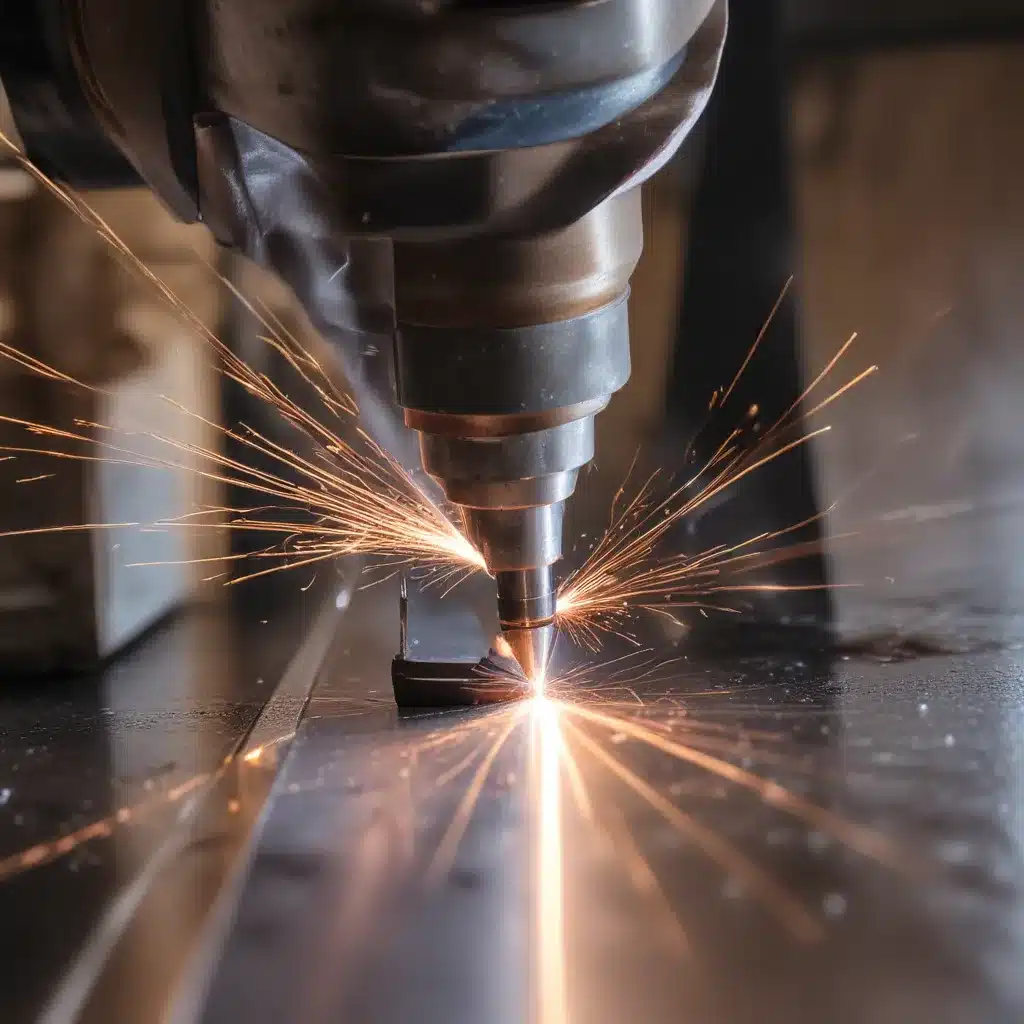
As an experienced welder and metal fabricator, I’ve had the privilege of witnessing the transformative power of laser beam welding, particularly when it comes to enhancing corrosion resistance in a wide range of industries. From aerospace to marine applications, this precision technique has revolutionized the way we approach metalworking, offering unparalleled speed, accuracy, and integrity in our finished products.
The Allure of Aluminum Laser Welding
Aluminum and its alloys have long been prized for their lightweight, durable, and conductive properties, making them indispensable in a variety of industries. However, welding aluminum poses unique challenges due to its distinct alloy compositions. That’s where the magic of laser beam welding comes into play.
The process is truly captivating to witness. The laser beam, brimming with energy, interacts with the aluminum surface, which readily absorbs the laser’s power. This absorbed energy transforms into heat, elevating the metal’s temperature until it reaches the melting point, forming a molten pool. As the laser traverses the workpiece, the molten aluminum follows quickly, solidifying into a robust weld upon cooling.
But it’s not just the visual spectacle that makes laser beam welding so remarkable; it’s the unparalleled level of precision and control it offers. By precisely directing the laser’s energy, we can create welds that are remarkably consistent, free from distortion, and remarkably resistant to corrosion.
Unlocking the Secrets of Aluminum Alloys
Aluminum and its alloys are not created equal, and understanding the unique properties of each is crucial for achieving optimal results in laser welding. Let’s dive into a brief overview of the most common aluminum alloys and their applications:
| Alloy | Characteristics | Applications |
|---|---|---|
| Aluminum-Copper | High strength, limited corrosion resistance | Aircraft components |
| Aluminum-Manganese | Balanced strength and corrosion resistance | Pressure vessels, automotive parts |
| Aluminum-Silicon | Enhanced casting abilities, heat resistance | Automotive engines |
| Aluminum-Magnesium | Superior strength and corrosion resistance | Marine applications |
| Aluminum-Magnesium-Silicon | Versatile, excellent strength and corrosion resistance | Diverse applications |
| Aluminum-Zinc-Magnesium | Exceptional strength, compromised corrosion resistance | Aerospace, military |
By carefully selecting the appropriate aluminum alloy for the application at hand, we can ensure that our laser welded components not only exhibit unparalleled strength and durability but also possess the necessary corrosion resistance to withstand the harshest of environments.
Mastering the Laser Welding Technique
The successful application of laser beam welding for enhanced corrosion resistance is not merely a matter of having the right equipment; it’s also about understanding the fundamental principles and techniques that govern this process.
One of the key considerations is the absorption characteristics of the aluminum alloy. Different alloys have varying degrees of reflectivity, which can impact the energy transfer and the overall quality of the weld. By carefully adjusting the laser parameters, such as power output, beam diameter, and travel speed, we can optimize the energy absorption and ensure a consistent, high-quality weld.
Moreover, the shielding gas composition plays a vital role in protecting the molten pool from atmospheric contaminants, which can compromise the weld’s integrity and corrosion resistance. A carefully selected shielding gas, such as argon or helium, can create a barrier that prevents oxidation and maintains the purity of the weld.
Equally important is the preparation of the workpiece. Proper surface cleaning, joint fit-up, and edge preparation are essential for achieving a seamless, corrosion-resistant weld. We must meticulously remove any contaminants, such as oil, grease, or oxides, to ensure that the laser energy can be efficiently absorbed and the molten metal can flow freely.
Embracing the Precision of Laser Welding
As I reflect on my experiences as a welder and metal fabricator, I can’t help but marvel at the transformative power of laser beam welding. The level of precision and control it offers is truly unparalleled, allowing us to create welds that are not only aesthetically pleasing but also remarkably resistant to corrosion.
I’ll never forget the time we were tasked with fabricating a critical component for a marine vessel. The client had stringent requirements for both strength and corrosion resistance, and they knew that conventional welding techniques simply wouldn’t cut it. That’s when we turned to the power of laser beam welding.
The process was a true work of art. As the laser danced across the aluminum surface, the molten metal flowed effortlessly, forming a seamless, uniform weld that was virtually free of distortion. The precision and consistency of the weld were so impressive that the client couldn’t believe their eyes.
But the real test came when the component was subjected to rigorous corrosion testing. To our delight, the laser-welded joint not only passed with flying colors but also outperformed the client’s expectations. The weld demonstrated an exceptional resistance to the harsh marine environment, giving the client the peace of mind they needed to move forward with the project.
Embracing the Future of Laser Welding
As the world of metal fabrication continues to evolve, I can’t help but feel excited about the future of laser beam welding and its potential to transform our industry. The speed, accuracy, and corrosion resistance it offers are truly game-changing, and I believe that it will become an increasingly indispensable tool in the arsenal of every forward-thinking welder and fabricator.
But the journey doesn’t end there. As we continue to push the boundaries of what’s possible, I can’t wait to see how the technology will continue to evolve, offering even greater levels of precision, efficiency, and versatility. Who knows, perhaps one day we’ll be able to create welds that are so flawless, they’ll make even the most experienced fabricator swell with pride.
In the meantime, I’ll keep honing my craft, mastering the art of laser beam welding and sharing my insights with fellow welders and fabricators. After all, at The Weld Fab, we’re on a never-ending quest to push the boundaries of what’s possible, and I can’t wait to see what the future holds.


